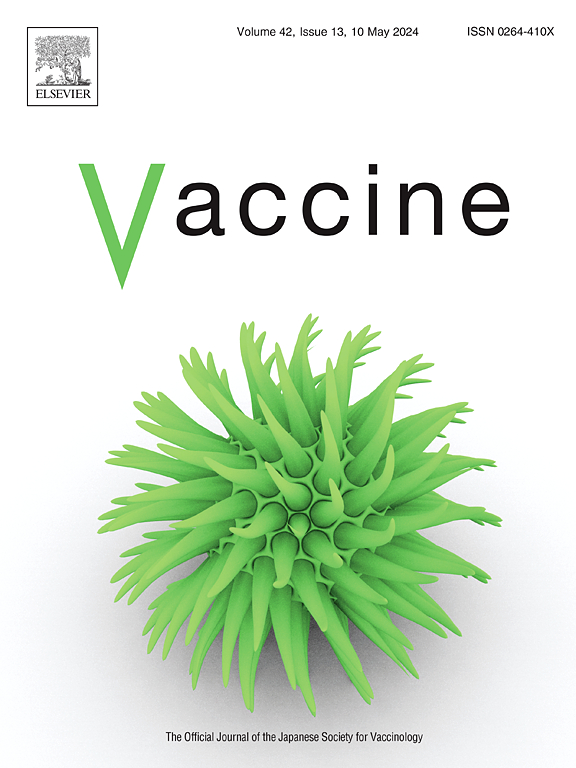Hepatitis B virus infection and vaccine coverage among children living with HIV, HIV-exposed uninfected, and HIV-unexposed uninfected children in the Western Cape, South Africa
IF 4.5
3区 医学
Q2 IMMUNOLOGY
引用次数: 0
Abstract
Background
Limited evidence on the burden of hepatitis B virus (HBV) infection among children living with HIV (CLWH), HIV-exposed uninfected (HEU) and HIV-unexposed uninfected (HUU) children hinders progress towards eliminating hepatitis B.
Methods
This study used secondary data and archival sera (N = 671) from children <13 years old attending health facilities in the Western Cape, South Africa. Hepatitis B vaccine coverage was assessed using vaccination records for doses 1 to 3 by 12 months of age. Timely uptake was defined as receipt of a dose from 4 days before to 28 days after the recommended age. Serological markers of infection and immunity were measured using Elecsys® test kits (Roche Diagnostics, Germany). Logistic regression was performed to assess factors associated with incomplete and delayed vaccination.
Results
Coverage with all three doses by 12 months was 86.7 % (13/15), 80.9 % (263/325), and 77.0 % (57/74) for CLWH, HUU, and HEU, respectively. Hepatitis B vaccine coverage decreased across all subgroups as the schedule progressed. The highest proportion of delayed uptake for the third dose was noted among CLWH at 23.1 % (3/13), followed by 21.6 % (58/269) among HUU and 15.3 % (9/59) among HEU children (p = 0.540). Median delay for dose 3 was longest among CLWH (11.3 weeks) compared to HUU (6.7 weeks) (p = 0.368). HBV infection was detected in 1.4 % (1/74) of HEU and 0.3 % (1/328) of HUU children, with no cases among CLWH. Factors associated with completing the third dose included crèche attendance, lower-middle socio-economic status (SES), timely uptake of dose 1, participant's age, and HIV exposure status. Crèche attendance was associated with a lower likelihood of delayed uptake, while increasing age was associated with a higher likelihood of delay.
Conclusion
Our findings highlight disparities in timely hepatitis B vaccine uptake and coverage, emphasizing the need for targeted interventions ensuring timely vaccine uptake among HIV-exposed children.
南非西开普省感染艾滋病毒儿童、未感染艾滋病毒暴露儿童和未感染艾滋病毒暴露儿童的乙型肝炎病毒感染和疫苗覆盖率。
背景:艾滋病毒感染儿童(CLWH)、未感染艾滋病毒暴露儿童(HEU)和未感染艾滋病毒暴露儿童(HUU)中乙型肝炎病毒(HBV)感染负担的证据有限,阻碍了消除乙型肝炎的进展。方法:本研究使用来自儿童的二手数据和档案血清(N = 671)。结果:到12个月时,CLWH、HUU和HEU三种剂量的覆盖率分别为86.7%(13/15)、80.9%(263/325)和77.0%(57/74)。随着接种计划的推进,乙型肝炎疫苗覆盖率在所有亚组中均有所下降。第三剂延迟吸收比例最高的是CLWH儿童,为23.1%(3/13),其次是HUU儿童21.6%(58/269)和HEU儿童15.3% (9/59)(p = 0.540)。CLWH患者中位延迟时间最长(11.3周),HUU患者中位延迟时间最长(6.7周)(p = 0.368)。在HEU患儿中检测到HBV感染的比例为1.4%(1/74),在HUU患儿中检测到HBV感染的比例为0.3%(1/328),在CLWH患儿中未发现病例。与完成第三次剂量相关的因素包括:cricche出勤率、中低社会经济地位(SES)、及时服用剂量1、参与者年龄和HIV暴露状况。参加crche与较低的延迟摄取可能性相关,而年龄的增加与较高的延迟摄取可能性相关。结论:我们的研究结果突出了乙肝疫苗及时接种和覆盖方面的差异,强调需要有针对性的干预措施,确保艾滋病毒暴露儿童及时接种疫苗。
本文章由计算机程序翻译,如有差异,请以英文原文为准。
求助全文
约1分钟内获得全文
求助全文
来源期刊

Vaccine
医学-免疫学
CiteScore
8.70
自引率
5.50%
发文量
992
审稿时长
131 days
期刊介绍:
Vaccine is unique in publishing the highest quality science across all disciplines relevant to the field of vaccinology - all original article submissions across basic and clinical research, vaccine manufacturing, history, public policy, behavioral science and ethics, social sciences, safety, and many other related areas are welcomed. The submission categories as given in the Guide for Authors indicate where we receive the most papers. Papers outside these major areas are also welcome and authors are encouraged to contact us with specific questions.
 求助内容:
求助内容: 应助结果提醒方式:
应助结果提醒方式:


